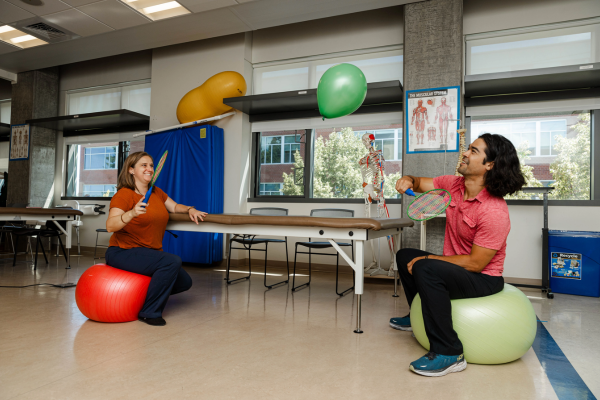Let’s be real—figuring out your next career move isn’t easy. But if you’re looking for something meaningful, something that blends science with people skills and heart? Getting an OTA degree might just be that thing.
Whether you’ve always been the go-to helper in your family or you’re itching to ditch your current job for something with purpose, this path is worth a closer look. But what does an OTA actually do?
Let me share a quick story. A few years back, my aunt took a bad fall and ended up with a busted hip. She spent months in rehab.
Doctors, nurses, physical therapists—she worked with them all. But the one person who really got through to her? She is an Occupational Therapy Assistant.
That guy helped her relearn how to button her shirt, brush her hair—you know, those little things you don’t think twice about until you can’t do them. He didn’t just help her heal physically—he helped her feel like herself again.
That’s when I realized how big a deal this job actually is.
What Does An OTA Actually Do?
They’re the ones who help people get back to living. Not just surviving—living. Whether it’s helping someone eat on their own after a stroke or teaching a kid with sensory issues how to use a toothbrush, OTAs are right there in those messy, real-life moments.
They work side-by-side with licensed occupational therapists, following customized care plans tailored to each patient. And you’ll find them all over the place—rehab centers, schools, nursing homes, hospitals.
If you’re someone who wants to see the actual, visible impact of your work—like you helped someone get back a piece of their life—then this job hits different.
And yep, it all starts with that OTA degree. That’s your ticket in.
OTA degree programs are the launchpad for stepping into this critical, people-first profession.
What To Expect In An OTA Program
Okay, cards on the table—no one wants to be stuck in school forever, right? The nice thing about OTA programs? They don’t take ages.
Most are associate’s degrees, and you can knock them out in about two years.
The students will cover a mix of coursework. You’ll dive into classes like:
Human Anatomy And Kinesiology
The students learn about kinesiology, which is the science behind human movement, and they also learn about human anatomy.
Pediatric Development
The students learn about the special medical care for children under pediatric care.
Mental Health Concepts
The discipline involves taking care of the mental health of the patients, understanding their mental conditions, and addressing other related issues.
Assistive Tech And Devices
The professionals have to operate various devices and other things. Therefore, the OTAs have to be well-versed with the technicalities as well.
But here’s where it gets good—fieldwork. This isn’t just about textbooks and lectures. You’ll spend real time in real clinics, learning by doing.
You’ll work with experienced OTAs and therapists, see how they interact with patients, and start building those practical skills that’ll actually carry you in the field.
Therefore, the students of OTA acquire practical skills while getting hands-on experience in their fields.
The discipline, hence, allows people to become prepared for taking care of the critical patients. Therefore, What Does an OTA Actually Do? They take care of the patients.
It’s one thing to read about adaptive equipment—it’s another to watch someone light up because you showed them how to use it.
Real Stories, Real Impact: What Does An OTA Actually Do To Help Patients?
Let me tell you about Tyler. He was fresh out of his first clinical rotation when we talked. He’d been working with a little girl who had a sensory processing disorder. She hadn’t smiled in weeks, he said.
But after a few sessions using play-based therapy, she started to giggle. He said—and I quote—“That moment made everything worth it.”
Stuff like that? It’s not rare in this field. Those small wins? They add up. And they stay with you.
Who Makes A Great OTA, And What Does An OTA Actually Do?
You don’t need to be some straight-A science whiz to be great at this job. What you do need is patience, people skills, and a whole lotta heart.
Think: creative problem-solver, someone who can go with the flow when things change last minute (and they will), and someone who actually listens. Because half the time, your patients won’t say what they need, you’ll have to notice it in the way they move or speak.
If you’re the kind of person who doesn’t mind getting hands-on, loves helping people, and doesn’t freak out when Plan A falls apart, you might be made for this.
Job Outlook And Career Growth: What Does An OTA Actually Do?
Let’s talk future-proof. OTAs are in demand—and not just a little. The Bureau of Labor Statistics says the job market for OTAs is growing way faster than average.
The pay’s solid too—not outrageous, but definitely a good living. And there’s room to move up or specialize if you want.
The aging population is a big reason for the growth. More folks need rehab, more long-term care. And that means more OTAs needed—fast.
1. Career Settings That Go Beyond The Norm
Sure, you’ve got your hospitals and outpatient clinics. But OTAs are everywhere these days.
- Pediatric therapy centers
- Home health care
- Assisted living facilities
- Schools
- Even community programs help people reintegrate after injuries or major health events
Depending on what kind of work lights you up, you can work with kids, seniors, veterans, people with disabilities—you’ve got options.
2. From Classroom To Career: Making The Transition
One more thing before you hit the ground running—you’ll need to pass the NBCOT exam (National Board for Certification in Occupational Therapy). That’s your big test before getting licensed.
Don’t worry, though—OTA programs prep you for it. Most offer review courses, practice exams, and lots of support. It’s tough, sure, but totally doable with the right mindset and training behind you.
What Does An OTA Actually Do? Is It The Right Fit?
Look, here’s the truth: the world could use more people who genuinely care. People who get that helping someone tie their shoes again, or walk to the kitchen unassisted, is huge for that person.
And if you’re looking for a career that actually makes a difference—but doesn’t require a decade in school or a mountain of debt—this one’s worth looking at.
So if your heart’s in the right place and you’re not afraid to jump in and help, becoming an OTA might just be the start of something incredible.









